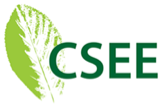

Lab Faculty and Staff
10/20/2017
The Default Mode Network, Motivation, and Attention
Having ADHD adds complexity, and therefore greater challenge, to one’s ability to access motivation and reach goals. Last week’s installment on ADHD and Motivation discussed the impact that neurobiology and neurodevelopment have on motivation in those with ADHD. Part 2, below, will discuss a specific network in the brain, the Default Mode Network, that works differently in those with ADHD. The section ends with a discussion of the educational implications and specific suggestions for parents and educators.
THE DEFAULT MODE NETWORK AND ADHD
ADHD has long been associated with deficits in cognitive and behalvioral inhibition. According to Rubia et al (2014), recent studies have shown ADHD patients have enhanced volume of gray matter in the Default Mode Network (DMN), a network of interacting brain regions that is active when we are daydreaming, not focused on the outside world, or otherwise engaged in a task or trying to reach a goal. It is also active when we think about others, think about ourselves, remember the past, and plan for the future. When performing a task, the DMN thoughts intrude on the task-positive cognitive systems needed to complete the task (Rubia, et al, 2014). We know our own DMN has been active when we “wake up” and realize we’ve been “zoning out.” It can be active in the form of worry, or it can be “inspired” by a word or idea mentioned in a classroom lecture, sending our thoughts on a tangential train of thought. Typically, when we engage in goal-oriented attention-demanding tasks, the DMN decreases its activity. Although problems deactivating, or inhibiting, the DMN are associated with normal development, those with ADHD have a more difficult time inhibiting this network. In other words, those with ADHD have a stronger gravitational pull toward this cognitive resting state and, therefore, it takes more effort than is typical to shift away from it and pay attention to the task at hand.
MOTIVATION AND ADHD IN THE CLASSROOM
So, children with ADHD facing daily tasks that are inherently unmotivating, (e.g., homework) face an uphill battle to get their minds jump-started into action. Many ADHD-related behaviors such as procrastination, inattention, poor planning, and unfinished work are not easily remediated, but can be supported with the right strategies when there is understanding of the underlying issues. Due to the inefficient connections between multiple networks in the brain, they will likely require stronger incentives, immediate rewards, and frequent reinforcement in order to learn optimally. Children with ADHD who are struggling to inhibit their Default Mode Network will benefit from prompts and cues redirecting their attention, being asked to repeat back multi-step instructions before starting a task, and having a safe environment to ask for directions to be repeated. Many benefit from stimulant medication that boosts the dopamine systems as a carrier of information between brain regions. They also benefit from interventions such as hands-on and arts-integrated lessons that naturally boost the dopamine systems in the brain by promoting cognitive and emotional engagement in the learning process (Berry & Loughlin, 2014). As adolescents with ADHD are expected to develop independent work habits starting in middle school, failure to meet these expectations can lead to increased frustration. Their immature sense of time, along with maturational delays in executive functioning and reward processing, supports the need for effective strategies and accommodations in the classroom. Extended time and explicit planning strategies are two examples that support many ADHD students. In fact, due to the developmental elasticity of the brain, appropriate support and strategies taught by understanding teachers can actually serve to rewire the brain to develop more efficient networks and lead to positive outcomes for those with ADHD.
References
Berry, Katherine A., and Sandra M. Loughlin. "COGNITIVE AND AFFECTIVE ENGAGEMENT, ARTS INTEGRATION, AND STUDENTS WITH DISABILITIES." Arts Integration and Special Education: An Inclusive Theory of Action for Student Engagement (2014): 46.
Fosco, Whitney D., et al. "Evaluating cognitive and motivational accounts of greater reinforcement effects among children with attention-deficit/hyperactivity disorder." Behavioral and Brain Functions 11.1 (2015): 20.
Kohn, Alfie. Punished by rewards: The trouble with gold stars, incentive plans, A's, praise, and other bribes. Houghton Mifflin Harcourt, 1999.
Ma, Ili, et al. "Ventral striatal hyperconnectivity during rewarded interference control in adolescents with ADHD." cortex 82 (2016): 225-236.
Plamondon, André, and Rhonda Martinussen. "Inattention symptoms are associated with academic achievement mostly through variance shared with intrinsic motivation and behavioral engagement." Journal of attention disorders(2015): 1087054715587098.
Rubia, Katya, Analucia Alegria, and Helen Brinson. "Imaging the ADHD brain: disorder-specificity, medication effects and clinical translation." Expert review of neurotherapeutics 14.5 (2014): 519-538.
Steinberg, Laurence. Age of opportunity: Lessons from the new science of adolescence. Houghton Mifflin Harcourt, 2014.
Telzer, Eva H. "Dopaminergic reward sensitivity can promote adolescent health: A new perspective on the mechanism of ventral striatum activation." Developmental cognitive neuroscience 17 (2016): 57-67.
Westbrook, Andrew, and Todd S. Braver. "Dopamine does double duty in motivating cognitive effort." Neuron 89.4 (2016): 695-710.
Yarmolovsky, Jessica, et al. "Hot executive control and response to a stimulant in a double-blind randomized trial in children with ADHD." European archives of psychiatry and clinical neuroscience (2016): 1-10.




